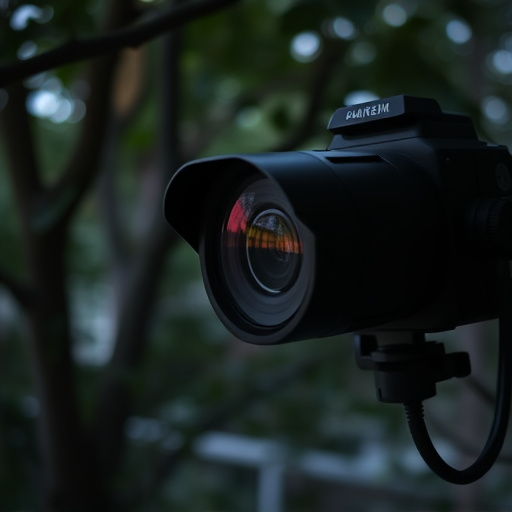A Remote Viewing Nanny Surveillance System requires strategic placement to overcome signal obstacles like walls and interference from other devices. Key factors include line-of-sight access, frequency selection, and regular testing for optimal performance. Outdoor cameras should be placed in open spaces while indoor devices aim for windows or common areas to boost signal strength, balancing convenience with privacy through responsible use and consent.
Uncover the secrets of effective wireless surveillance with our comprehensive guide. Learn how to optimize your remote viewing capabilities using a nanny surveillance system. We’ll walk you through crucial tips, from understanding signal range and interference to choosing discreet locations for unobtrusive monitoring. Discover best practices for privacy and security in today’s digital era, ensuring safe and reliable remote viewing.
- Understanding Wireless Surveillance Range and Interference
- Choosing Optimal Location for Unobtrusive Monitoring
- Utilizing Outdoor vs Indoor Signal Strength Considerations
- Privacy and Security: Best Practices for Remote Viewing
Understanding Wireless Surveillance Range and Interference
Wireless surveillance equipment, like a remote viewing nanny surveillance system, operates within a specific range and is susceptible to interference from various factors. Understanding these limitations is key to effective location detection. The signal strength and quality can be affected by physical obstacles such as walls, floors, and other electronic devices that may block or weaken the wireless signal. Interference can also come from other nearby surveillance systems, microwaves, Bluetooth devices, and even electrical appliances, causing signal degradation or complete dropouts.
When setting up a nanny surveillance system, it’s crucial to account for these potential obstacles and sources of interference. This might involve positioning the transmitter strategically, ensuring line-of-sight access between the device and the receiver, and choosing frequencies or channels less prone to congestion. Regular testing and adjustments can help maintain optimal performance and reliable remote viewing capabilities.
Choosing Optimal Location for Unobtrusive Monitoring
When setting up a wireless surveillance system, especially for purposes like remote viewing or nanny surveillance, choosing the optimal location is key to achieving unobtrusive and effective monitoring. The ideal spot should offer a clear line of sight to the area you wish to observe while remaining hidden from view. This might mean positioning cameras strategically behind furniture or in corners that aren’t immediately noticeable but still capture quality footage.
Consider factors like lighting, which can affect image quality, and the presence of obstacles like curtains or blinds that could block the camera’s view. It’s also crucial to ensure the location has a stable internet connection for smooth remote viewing and to avoid areas prone to interference from electronics or structural elements that might disrupt signal strength.
Utilizing Outdoor vs Indoor Signal Strength Considerations
When setting up a remote viewing nanny surveillance system, understanding signal strength differences between outdoor and indoor environments is key. Outdoor signals generally have better penetration due to fewer obstructions like walls and ceilings. This allows for broader coverage and more reliable transmission, making it ideal for large properties or areas with complex layouts. However, indoor spaces present unique challenges. Walls, floors, and furniture can significantly weaken signals, requiring stronger antennas or signal repeaters to maintain clear communication.
For optimal results, consider the physical layout of the area being monitored. If the remote viewing system is primarily for outdoor surveillance, ensure strong signal reception by strategically placing cameras in open spaces. For indoor monitoring, focus on installing devices near windows or common areas to capture stronger signals. This dual consideration of signal strength will contribute to a more effective and efficient nanny surveillance setup.
Privacy and Security: Best Practices for Remote Viewing
When employing a remote viewing nanny surveillance system, it’s paramount to balance convenience with privacy and security. Best practices involve ensuring explicit consent from all parties involved, especially the individuals being monitored. Transparency is key; inform caregivers, children, and any other occupants that the system is in use and for what purpose. Secure access credentials are equally vital to prevent unauthorized viewing. Only approved users should have login details, and strong, unique passwords should be enforced. Regularly update software and firmware to patch security vulnerabilities, and consider encryption methods to safeguard video feeds from interception.
Additionally, it’s crucial to respect personal boundaries. Position surveillance equipment strategically, avoiding areas that offer no expectation of privacy, such as bathrooms or bedrooms. Schedule regular check-ins with caregivers to discuss any concerns or anomalies observed through remote viewing, fostering open communication rather than relying solely on technology for oversight.
When deploying a remote viewing nanny surveillance system, understanding wireless range, minimizing interference, and strategically choosing locations are key. Balancing outdoor and indoor signal strength ensures optimal monitoring while adhering to privacy and security best practices for responsible remote viewing. By following these tips, you can create an effective and discreet system tailored to your needs.
